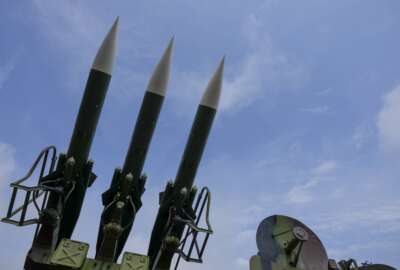Army wraps up 100-day sprint, plots next steps for AI
The Army's next 500-day study project will include focuses on, among other things, "breaking" AI and figuring out how to counter adversaries' use of AI.
Fresh off of 100 days of “sprints” designed to eliminate stumbling blocks toward artificial intelligence adoption, the Army says it’s developed a clearer picture of what it wants to achieve between now and 2026, when it plans to become the first military service with a formal program of record specifically for AI.
Next up will be another 500 days of planning work as the Army builds out what it learned during the first series of sprints, and also adds two new objectives to its study plan: one initiative dubbed “Break AI,” and another called “Counter AI.”
The Break AI line of effort is based on the assumption that the technology space will continue to move toward what researchers call artificial general intelligence — models whose behavior might resemble human thinking — rather than current technologies that tend to generate predictable outcomes, given the same data inputs.
“It’s about the notion of how we actually test and evaluate artificial intelligence,” Young Bang, the principal deputy assistant secretary of the Army for acquisition, logistics and technology told attendees at AFCEA’s TechNet conference in Augusta, Ga. Wednesday. “As we move towards AGI, how do we actually test something that we don’t know what the outcome of, or what the behaviors are going to be? You can’t test it the way that we test deterministic models, and we need industry’s help here.”
The Counter AI work, meanwhile, is more focused on thinking through the capabilities the Army will need to have in place to defend itself against adversaries’ use of artificial intelligence.
“We want to make sure our platforms, our algorithms and our capabilities are secure from attack and from threat, but it’s also about how we counter what the adversary has,” said Jennifer Swanson, the deputy assistant secretary of the Army for data, engineering and software. “We know we’re not the only ones investing in this — there’s lots of investment happening in countries that are big adversarial threats to the United States. We’re not going to talk about all of that publicly, because there has to be some operational security involved in this. But as we start to learn and figure out what we’re going to do, there’s going to be things we share.”
New RFI for defending AI systems
Meanwhile, the Army is explicitly asking vendors to share what they’ve learned about securing and defending artificial intelligence systems and technologies. That’s one of the key things the service determined it needs to tackle during the previous 100 day sprints.
In a request for information the Army issued July 31, officials asked for feedback on their first version of a new AI Layered Defense Framework. Comments are due by the end of this month.
The framework — depicted as an inverted pyramid — tries to break down different types of AI models into three different risk categories, high, medium, and low, depending on how much work might need to go into securing them, and also based on how they’re being used.
“We’ve identified about 30 different types of risk or attacks with about 60 different types of controls to help mitigate some of those, and we need smart people in industry and government to help us identify some gaps, scale and make improvements to this,” Bang said. “The notion is, as we go down the pyramid, we can set more risk at the top. The lower you go, we want to accept less risk and have more controls, and then let commanders and people make the risk based decisions. That will help us say, ‘Yes, we will put this in a weapon system,’ or, ‘We need more controls to address those type of risks.’”
Project Linchpin expected to be fully funded in 2026
Those initiatives, and more to come over the next 500 days, will eventually feed into Project Linchpin, the new AI program of record the Army has been working to stand up since 2023. That effort is, in part, an outgrowth of a program called Titan, an information fusion project the Army first demonstrated in the first iteration of Project Convergence four years ago.
“We had kind of vague but specified requirements in our capabilities development documents saying Titan must leverage AI to reduce a cognitive burden on the analyst, so we realized we needed AI,” said Col. Chris Anderson, the project manager for intelligence systems and analytics in the Army’s program executive office for intelligence, electronic warfare and sensors. “I did not have a mechanism as a PM to really get after acquiring it, and in the Army intel data platform, we had terabytes of exquisite data finally consolidated in one place in the cloud for the first time in history. It just screamed for applying some some large language models to look at it.”
He said it soon became clear that the same logic applied to the rest of PEO IEW&S’s portfolio.
“We saw a need for AI and machine learning and without a mechanism to get it. So a couple of my engineers and one of my assistant product managers came in and said, ‘Hey, we need to build an AI pipeline. I said, that’s pretty good idea,” Anderson said. “And then we ran it up the flagpole to the Army, and what we have now is it’s kind of grown to supporting the entire army, not just my PM shop.”
Copyright © 2025 Federal News Network. All rights reserved. This website is not intended for users located within the European Economic Area.
Jared Serbu is deputy editor of Federal News Network and reports on the Defense Department’s contracting, legislative, workforce and IT issues.
Follow @jserbuWFED






